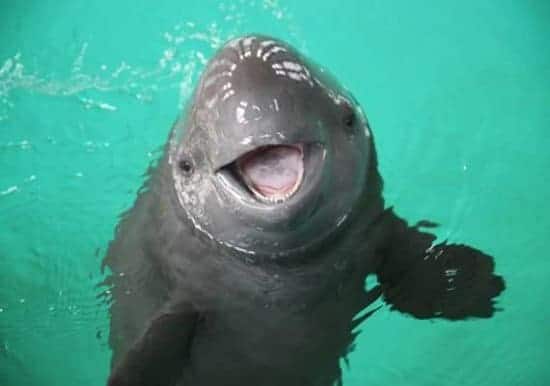The world’s smallest porpoise is on the brink of extinction

 The vaquita marina, the world’s smallest porpoise, is on the brink of extinction with only 30 members left, according to the most recent data. Down from a population of 200 in 2012, conservationists say that the vaquita will be extinct by the year 2022 unless a concerted international effort is taken to save the species.
The vaquita marina, the world’s smallest porpoise, is on the brink of extinction with only 30 members left, according to the most recent data. Down from a population of 200 in 2012, conservationists say that the vaquita will be extinct by the year 2022 unless a concerted international effort is taken to save the species.
“The already desperate situation has worsened, despite existing conservation measures and current enforcement efforts,” says a recent report by the International Committee for the Recovery of the Vaquita (CIRVA). “At the current rate of loss, the vaquita will likely decline to extinction by 2022, unless the current gillnet ban is maintained and effectively enforced.”
The vaquita, which means “little cow,” live in the Sea of Cortez at the northern end of the Gulf of California, feeding on squid, fish and crustaceans. The notoriously shy mammal — vaquitas have rarely been observed alive — inhabits shallow lagoons along the coastline usually in small groups of two or three.
Primarily, the decline in population has been attributed to being caught up in gillnets by fishers intending to catch a large fish called the totoaba, itself a threatened species which is currently being poached for its swim bladder, a prized delicacy in China. Reportedly, the demand for totoaba bladders has increased over the past decade, leading to an accompanying 90 per cent decline in the vaquita population.
The Mexican government has taken steps to combat the illegal fishing, including establishing the CIRVA committee and imposing a temporary ban on the use of gillnets, starting in 2015. Yet, conservationists have been critical of Mexico’s response, calling it less than concerted.
“The decrease in the vaquita population by 90 percent over the last 5 years and almost 50 percent in 2015 alone shows there was never a real commitment by the Mexican authorities to combat totoaba fishing or gillnets in the vaquita’s habitat,” said Miguel Rivas, ocean campaigner for Greenpeace Mexico. “Totoaba and gillnet fishing continued and will finish off the few vaquita that remain in the wild if the authorities do not take real action.”
While the consensus is that enforcing the ban on gillnet fishing in the vaquita’s habitat is crucial to its survival, opinions are divided on other measures. Some experts are recommending capturing some of the remaining vaquita and keeping them in a marine enclosure within the Gulf, so that they are kept safe and able to reproduce.
Others worry about the risk of vaquitas dying in the process of capture, a serious problem with so few members left. For its part, CIRVA is in favour of the capture and enclosure approach, not willing to leave the vaquita’s fate in the hands of poachers and the Mexican government. “Illegal fishing continues and if we don’t capture them, they will die anyway,” CIRVA chairman Lorenzo Rojas-Bracho.
After the baiji dolphin’s extinction, formally declared in 2007, the vaquita has become the world’s most endangered cetacean. The Canadian government’s List of Wildlife Species at Risk includes a number of cetaceans under both the Endangered and Threatened categories. Under Endangered, the list includes the blue whale (both Atlantic and Pacific populations and the North Atlantic and North Pacific right whale populations. Threatened species include the fin whale, beluga whale (St. Lawrence Estuary population), the North Pacific humpback whale and two populations of the killer whale.

